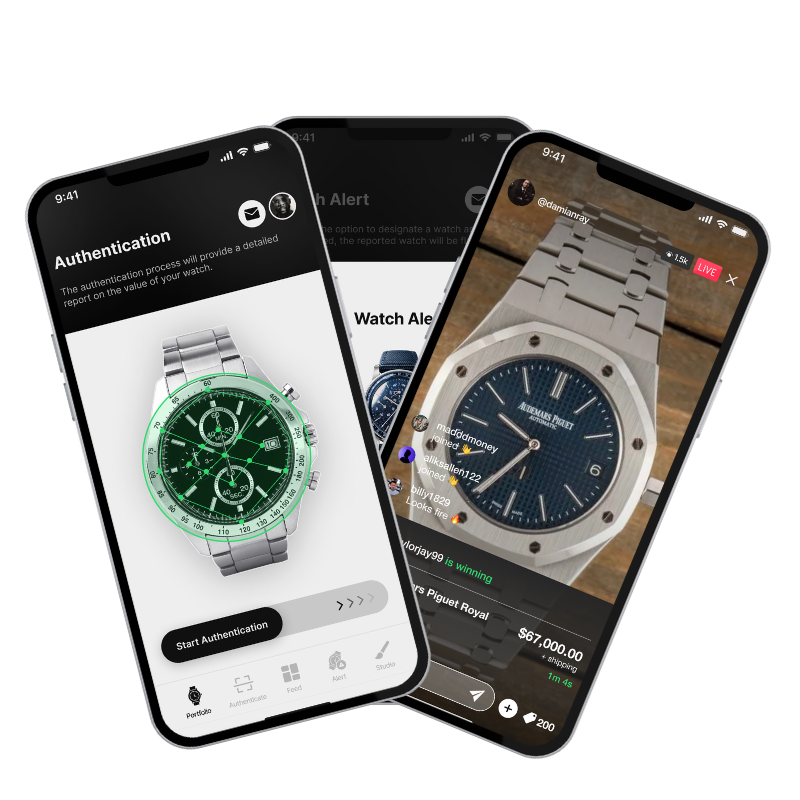The time-honored tradition of horology is receiving a contemporary facelift with the advent of Artificial Intelligence (AI) and computer vision technology – basically teaching a computer how to see like a human. This digital overhaul is carving a new era in the luxury watch market, characterized by enhanced authenticity verification processes and enriched consumer engagement platforms.
Luxury watches are a $75 billion market, with secondhand sales making up 30% of that at roughly $22 billion, according to Boston Consulting Group. And, the secondhand space continues to heat up as demand, particularly among Gen Z and Millennials, drives growth.
The new and younger consumers see the space as less about style and more about investment and ROI, as luxury watches are in demand as alternative investments. Buyers are willing to pay high premiums for preowned models from top brands such as Patek Philippe, Rolex, and Audemars Piguet, with the expectation that the value of these watches will continue to rise. And, rightfully so – these big three have outperformed the S&P 500 from 2018 to 2023 at 20% compared to the public markets at 8%, as reported by Fox Business.
However, one of the biggest concerns in the secondhand luxury watch space has always been the menace of counterfeits, which represents a $5 billion problem. But with AI’s meticulous analysis and computer vision’s ability to discern minute details, distinguishing authentic watches from fake ones has become a more precise endeavor. This tech-driven approach is amplifying authenticity assurance, a critical facet that underpins the allure and value of luxury watches as an alternative investment class.
Moreover, the integration of live video commerce is bridging the physical-digital divide, offering a dynamic, interactive platform for enthusiasts and buyers and cutting out unnecessary middlemen who plague the space. Through live video interactions, individuals can explore a timepiece in detail, ask questions in real time, and make informed purchasing decisions from the comfort of their homes.
“Embedding technology in the traditional framework enhances the overall buying and selling experience, making it more transparent and engaging. We’re focused on tackling three major problems that exist currently: transparent pricing, direct seller-to-buyer transactions, and making sure every timepiece is authentic,” explains Alex Todd, Chief Watch Expert at Wrist Shot, a disruptive company in the luxury watch space founded by watch enthusiasts and key insiders. Todd is a celebrity jeweler with more than 30 years in the industry, the man behind Jay Z’s immaculate watch collection, who ices out other famous celebrities like Rihanna, Kevin Hart, and Lil Uzi, to name others.
The platform, through its subtle infusion of AI and computer vision, leverages these advanced technologies and provides a haven for authentic watch transactions, nurturing the trust between buyers and sellers.
As the market for pre-owned luxury watches expands, platforms employing AI and live video commerce are playing a pivotal role in catering to evolving consumer preferences and cutting out middlemen who create inefficiencies and fraud in the sales process. The pre-owned luxury watch market was worth roughly $18 billion in 2018 and is projected to grow to more than $30 billion by 2025, as reported by Chubb, the world’s largest public insurance provider – and AI will be a vital component to ensuring authenticity for secondary sales.
The synergy of tradition and technology is not merely a trend but a progressive stride toward reshaping the luxury watch market landscape. This digital metamorphosis is expanding the horizons for watch aficionados, providing them with platforms where they can not only purchase authentic timepieces but also immerse themselves in a rich, educative, and interactive horological journey.
Wrist Shot, for instance, underscores its approach as an amalgamation of traditional horology ethos with modern tech-driven consumer engagement channels. It demonstrates how subtly embedded technology can drive a holistic and enriched experience in the luxury watch marketplace, and how AI is going to shape many more markets in the coming years.
“The journey of luxury watches from auction houses to digital platforms is a testament to the evolving consumer dynamics and the endless possibilities that lie ahead with the fusion of AI and computer vision technology,” Todd explains. This digital transition underscores a promising trajectory where the essence of timekeeping marries the sophistication of modern technology, setting a new bar for what’s to come in the world of luxury watches.
Read the full article here





